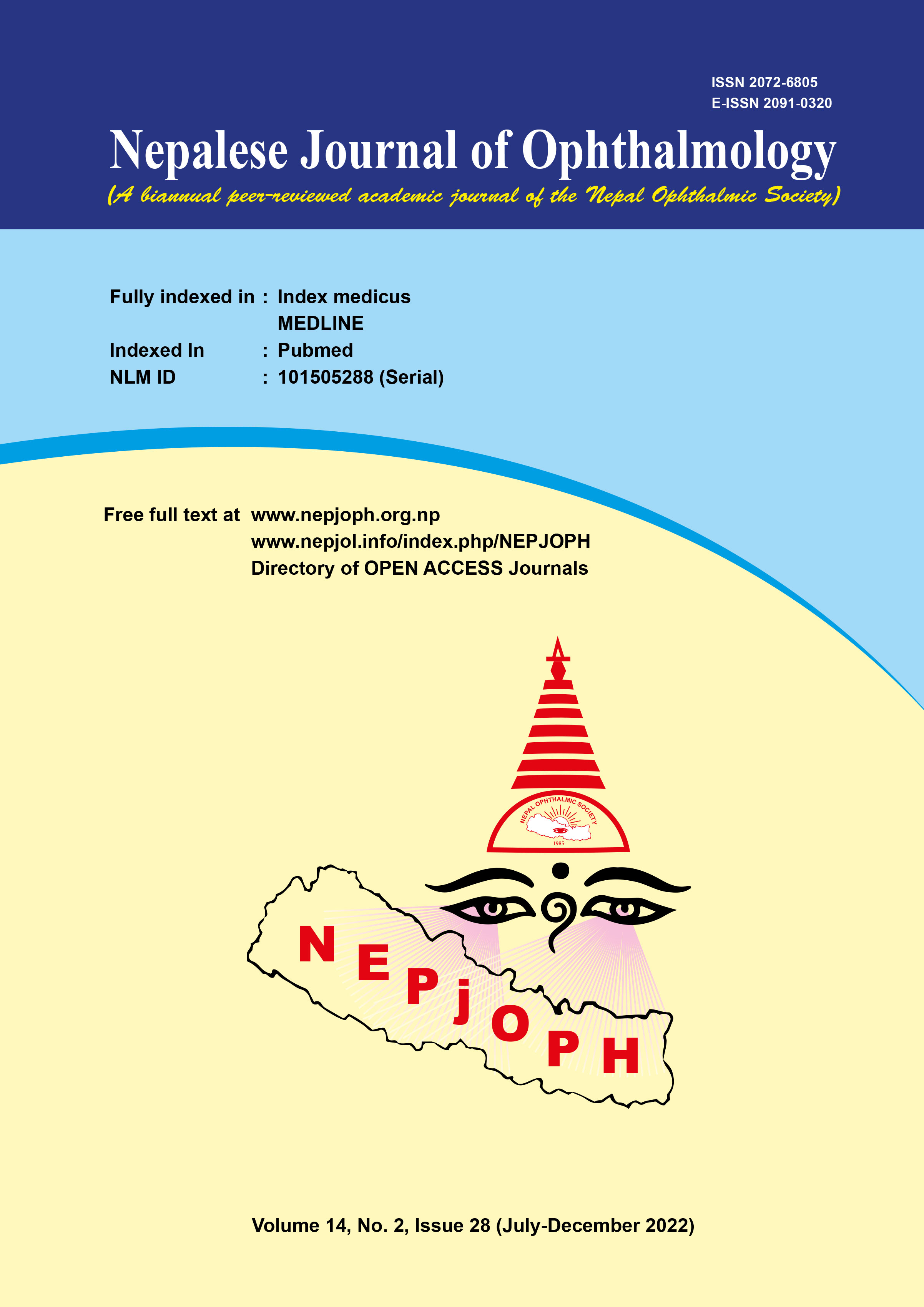Ethambutol induced toxic optic neuropathy - A retrospective study in a tertiary eye care centre in Southern India
DOI:
https://doi.org/10.3126/nepjoph.v14i2.42780Keywords:
Anti-tubercular treatment, Ethambutol, Optic neuropathy, Vision lossAbstract
Introduction: Ethambutol is an antibiotic used as a first line drug in the treatment of tuberculosis and a vision threatening side effect of EMB is ethambutol-induced optic neuropathy (EON). The aim of the study is to create awareness about the potentiality of ethambutol to cause ethambutol-induced optic neuropathy, careful monitoring of dose and patient education.
Materials and methods: A retrospective observational study of 14 patients whose complete Anti- tubercular treatment records could be retrieved were included. Epidemiological data including age, sex, systemic illness were recorded. Duration between optic nerve toxicity , usage of ethambutol and the drug dosage were noted. Best corrected visual acuity, anterior segment examination including pupils, extraocular movements, colour vision, central fields and fundus examination were evaluated. The patients were followed up at one and three month intervals.
Results: Associated systemic illness was found to be a confounding factor for the development of ethambutol-induced optic neuropathy. 57% of patients had diabetes mellitus followed by hypertension (14.2%), renal disease (7.1%). The average daily dose of Ethambutol ingested was 1078.5 mg (21 mg/kg) and this high dose could have been the primary cause for development of ethambutol-induced optic neuropathy. Vision ranged from total blindness to mild visual impairment and poor recovery of vision was noted even after discontinuing ethambutol.
Conclusion: Only a minority of patients showed improvement in visual function following discontinuation of ethambutol and the toxicity was found to be dose-dependent. Patients with comorbidities like renal impairment and diabetes mellitus appeared to be at greater risk. Ophthalmological examination before commencing treatment and periodic evaluation thereafter is mandatory.
Downloads
Downloads
Published
How to Cite
Issue
Section
License
Copyright (c) 2022 Nepalese Journal of Ophthalmology

This work is licensed under a Creative Commons Attribution-NonCommercial-NoDerivatives 4.0 International License.
This license enables reusers to copy and distribute the material in any medium or format in unadapted form only, for noncommercial purposes only, and only so long as attribution is given to the creator.




